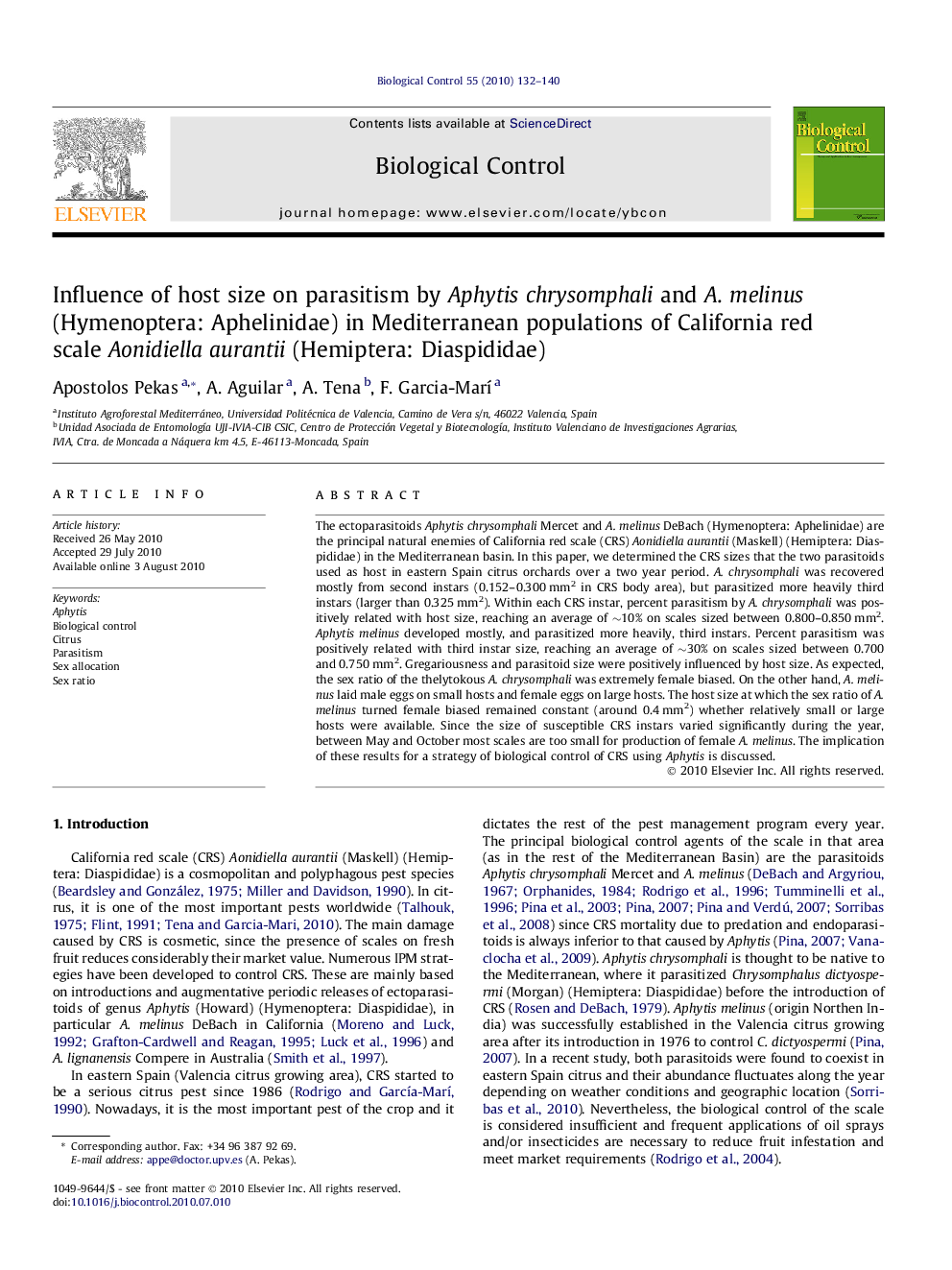| Article ID | Journal | Published Year | Pages | File Type |
|---|---|---|---|---|
| 4504338 | Biological Control | 2010 | 9 Pages |
The ectoparasitoids Aphytis chrysomphali Mercet and A. melinus DeBach (Hymenoptera: Aphelinidae) are the principal natural enemies of California red scale (CRS) Aonidiella aurantii (Maskell) (Hemiptera: Diaspididae) in the Mediterranean basin. In this paper, we determined the CRS sizes that the two parasitoids used as host in eastern Spain citrus orchards over a two year period. A. chrysomphali was recovered mostly from second instars (0.152–0.300 mm2 in CRS body area), but parasitized more heavily third instars (larger than 0.325 mm2). Within each CRS instar, percent parasitism by A. chrysomphali was positively related with host size, reaching an average of ∼10% on scales sized between 0.800–0.850 mm2. Aphytis melinus developed mostly, and parasitized more heavily, third instars. Percent parasitism was positively related with third instar size, reaching an average of ∼30% on scales sized between 0.700 and 0.750 mm2. Gregariousness and parasitoid size were positively influenced by host size. As expected, the sex ratio of the thelytokous A. chrysomphali was extremely female biased. On the other hand, A. melinus laid male eggs on small hosts and female eggs on large hosts. The host size at which the sex ratio of A. melinus turned female biased remained constant (around 0.4 mm2) whether relatively small or large hosts were available. Since the size of susceptible CRS instars varied significantly during the year, between May and October most scales are too small for production of female A. melinus. The implication of these results for a strategy of biological control of CRS using Aphytis is discussed.
Research highlights► Aphytis chrysomphali was recovered mostly from second instars of California red scale, A. aurantii (0.152–0.300 mm2 in body area) while Aphytis melinus developed mostly, and parasitized more heavily, third instars. ► Within each A. aurantii instar, percent parasitism was positively related with host size, reaching ∼10% for A. chrysomphali (scales sized between 0.800–0.850 mm2) and ∼30% for A. melinus (scales sized between 0.700–0.750 mm2). ► Gregariousness and parasitoid size were positively influenced by host size. ► Aphytis melinus laid male eggs on small hosts (less than 0.4 mm2) and female eggs on large hosts (larger than 0.4 mm2). ► The host size at which the sex ratio of A. melinus turned female biased remained constant (around 0.4 mm2) whether relatively small or large hosts were available. ► From May until October most scales were too small to produce female A. melinus.
